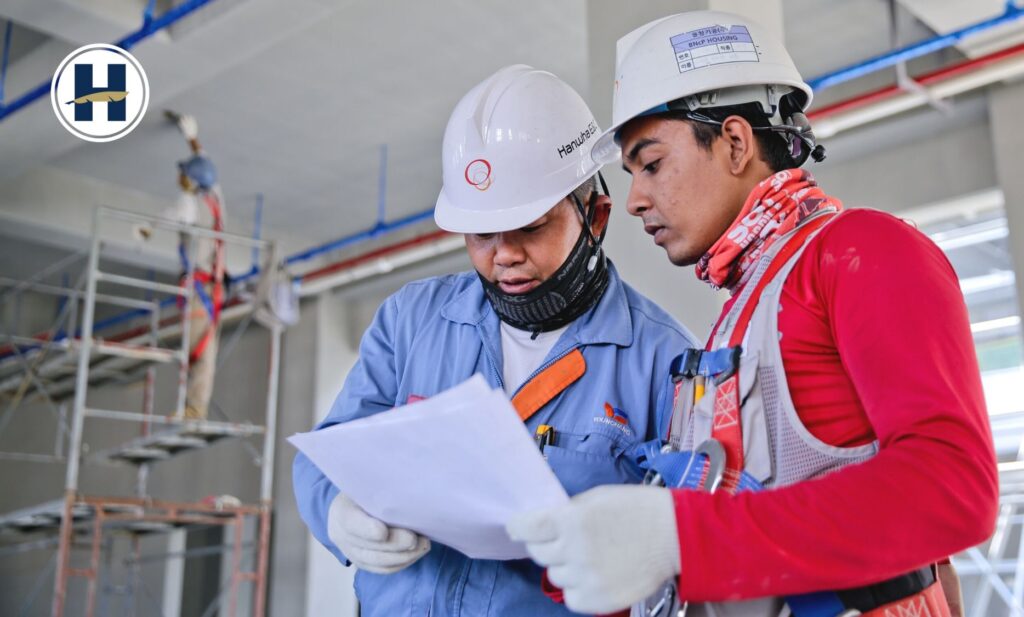8000 Sagemore Drive
Marlton, NJ 08053
Tel: 856-489-9100
Fax: 856-489-9101
525 E. Elmer Street
Vineland, NJ 08360
Tel: 856-489-9100
Fax: 856-489-9101
PO Box 40901
Philadelphia, PA 19107
Tel: 856-489-9100
Fax: 856-489-9101

You run a small construction company. One of your employees is climbing up a ladder with one hand while holding some power tools with another and, as a result, puts not only the employee in danger but also some of your other employees. How do you respond to this? For one thing, the employee technically hasn’t done anything malicious. It is simply a corner that has been cut, likely in the name of productivity. Either way, OSHA wouldn’t be happy about what is going on. And if OSHA isn’t happy, you probably won’t be happy either.
When it comes to safety programs and regulatory compliance, there are generally two types of responses:
Reactive Responses
A reactive response is one which happens as a reaction to an injury or an illness and is designed to help minimize the costs which are associated with that event. If a management team chooses to go with reactive responses more often than not, it sends the message that they don’t care about their employees’ safety. Regulatory agencies, especially OSHA, really don’t care what happens after an accident during their investigations (but they will ensure you fix it anyway). Insurance companies aren’t going to give you a break on your claim for making a handful of changes after the claim happens, either.
Here are some hallmarks of reactive programs:
Proactive Responses
Generally speaking, these are the types of responses made by employers that take the ball that regulations throw at them and run with it. Proactive responses will take place prior to accidents and help to anticipate those accidents and prevent them. This approach shows employees, whether they realize it or not, that the management and ownership of the company care about their health. In the long term, this is going to save a lot of money and is by far the less expensive option.
Here are some hallmarks of proactive programs:
How to Begin Implementing Proactive Safety Programs
Implementing proactive programs begins with communication. Start with a written policy which uses clear language and promotes safety as an organizational value. When you do your normal weekly or monthly meetings, add a section about safety so you can go over your current plans and your employees can vent some of their frustrations or suggest changes.
Next up, start implementing safety coordinators and teams. The teams should be small and will handle their sections of the business. Just like your organization, the teams can have a hierarchy and reporting will head upwards. In this way, you have more hands in the pot and will have more people checking to ensure safety on the ground level. It also allows you to ensure everyone and every area of the workplace has proper safety equipment.
Next, identify the hazards in your workplace. Label them. Make sure everyone understands the danger. Likewise, identify things which workers may be doing that require special training or precaution and ensure that programs are in place to handle those unique tasks.
These suggestions are not exhaustive, but they are definitely a good place to start.
Why This Is a Good Thing
These proactive programs are a good idea for a number of reasons, but the largest may be avoiding fines from regulatory agencies such as OSHA and lowering some of your costs on insurance. Insurance companies are going to value companies that are going out of their way to save themselves money and promote safety. Why? Because it means less claims. For business owners, this means lower costs, lower potential fines, lower risk, and (most of all) the value of knowing that you are doing everything that you can to keep your employees and workplace safe.
Tying It Together
Ultimately, reactive programs are going to send the wrong message. They are the equivalent of dropping a glass of milk because you had wet hands when you picked it up and then trying to blame someone else for dropping it, pretending like you didn’t drop it to begin with. It’s very transparent and it’s not going to fool anyone. Being proactive sends a positive message not only to your own employees but also to businesses and regulatory agencies that you work with. In other words: dry your hands before you pick up the glass of milk.
Does your company have a need for safety programs? Most do. Are you following all applicable regulations and taking some additional steps on your own? Maybe your company is currently doing the bare minimum it needs to do. Do your employees know that you care about their safety and well-being? To begin a review of your current situation and start implementing proactive safety programs, contact an HIG representative by calling 856-489-9100 or visiting our homepage!
8000 Sagemore Drive
Marlton, NJ 08053
Tel: 856-489-9100
Fax: 856-489-9101
525 E. Elmer Street
Vineland, NJ 08360
Tel: 856-489-9100
Fax: 856-489-9101
PO Box 40901
Philadelphia, PA 19107
Tel: 856-489-9100
Fax: 856-489-9101